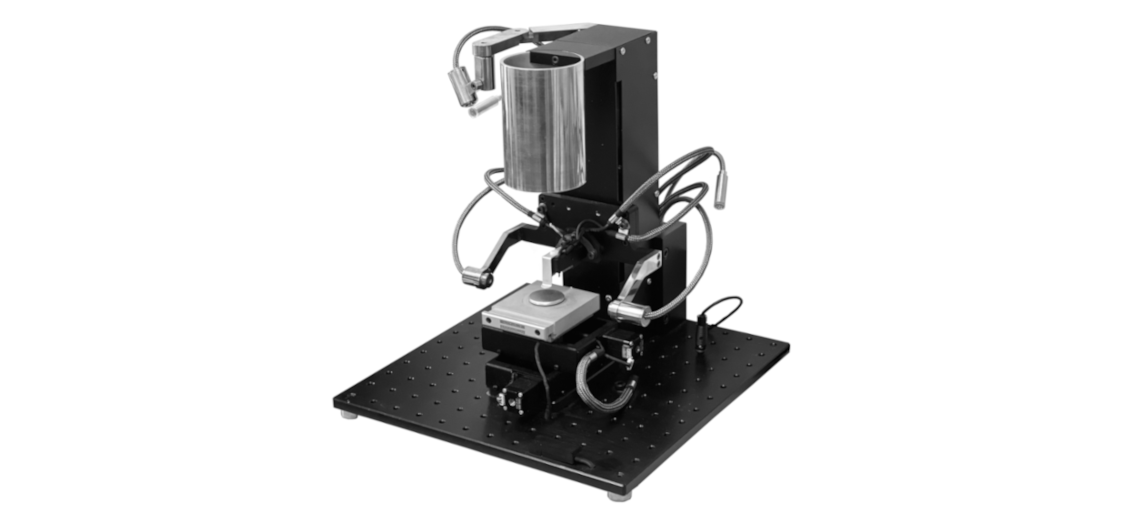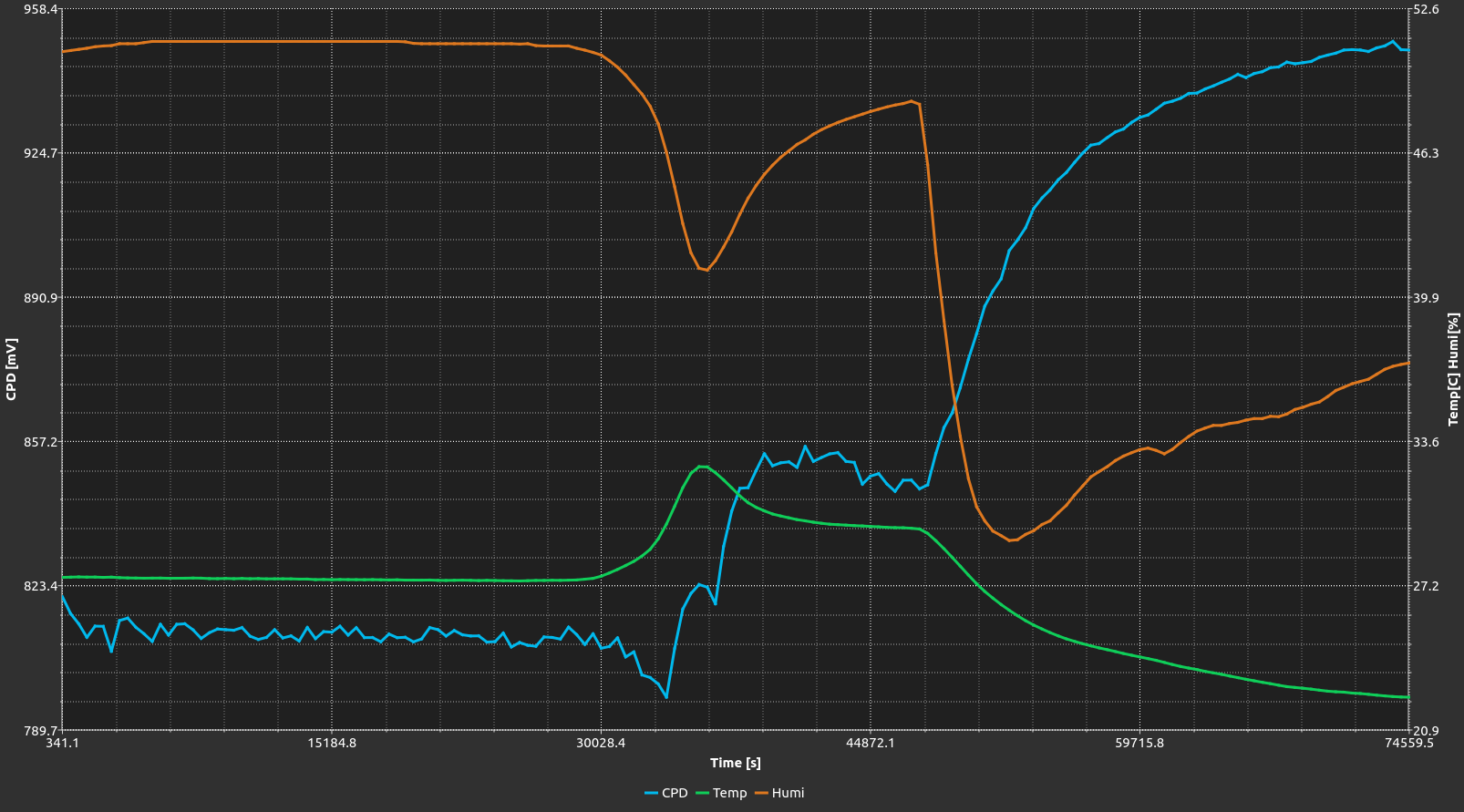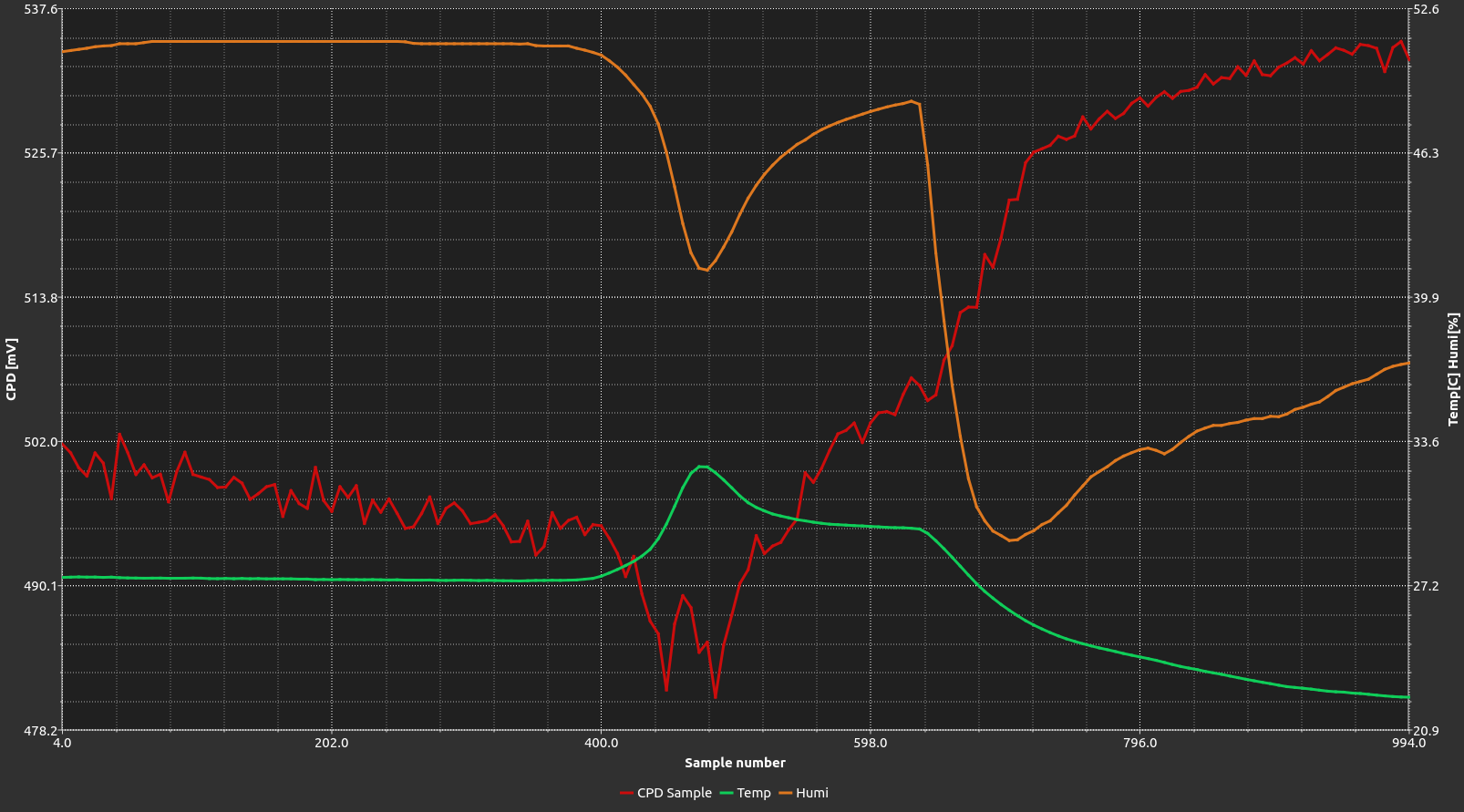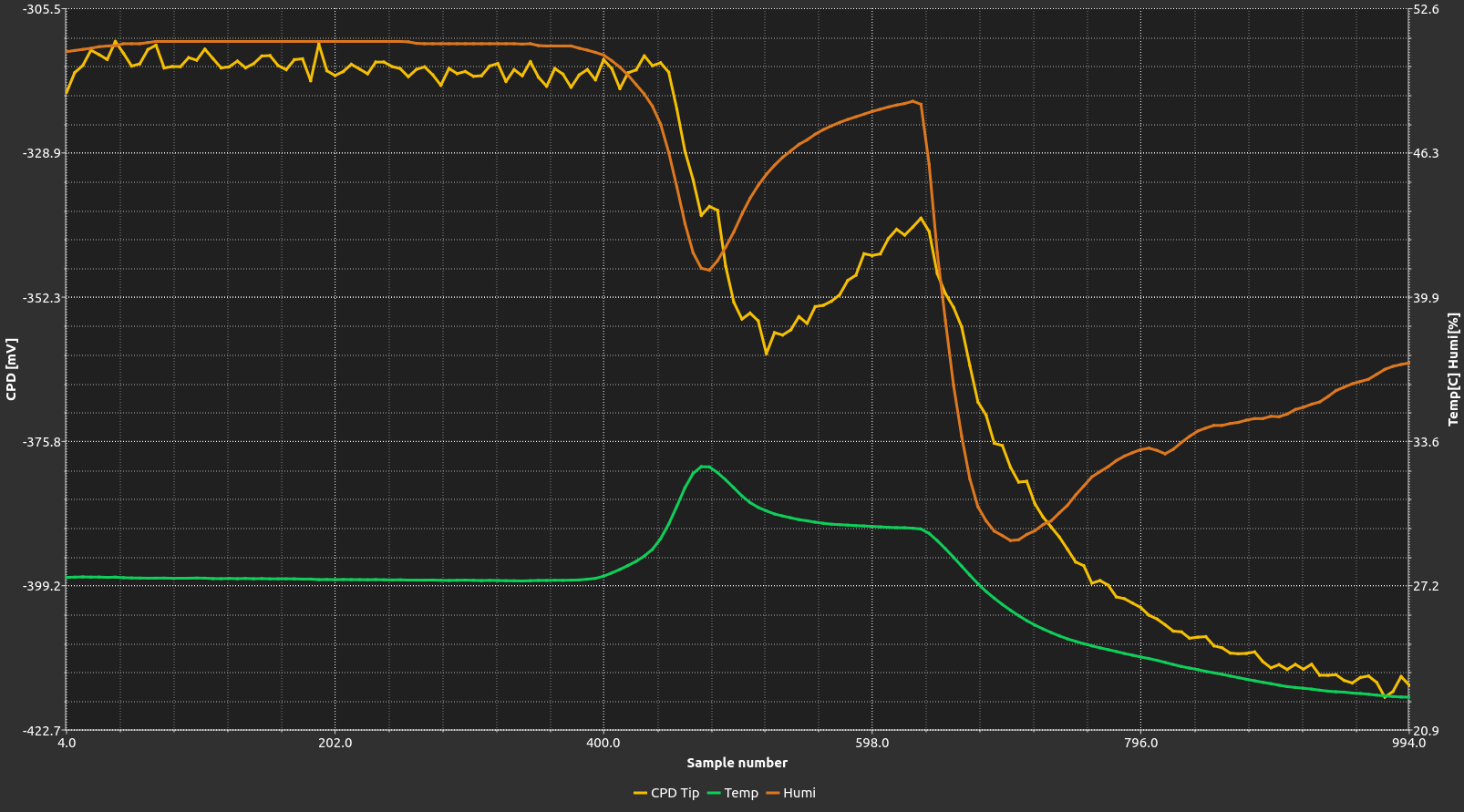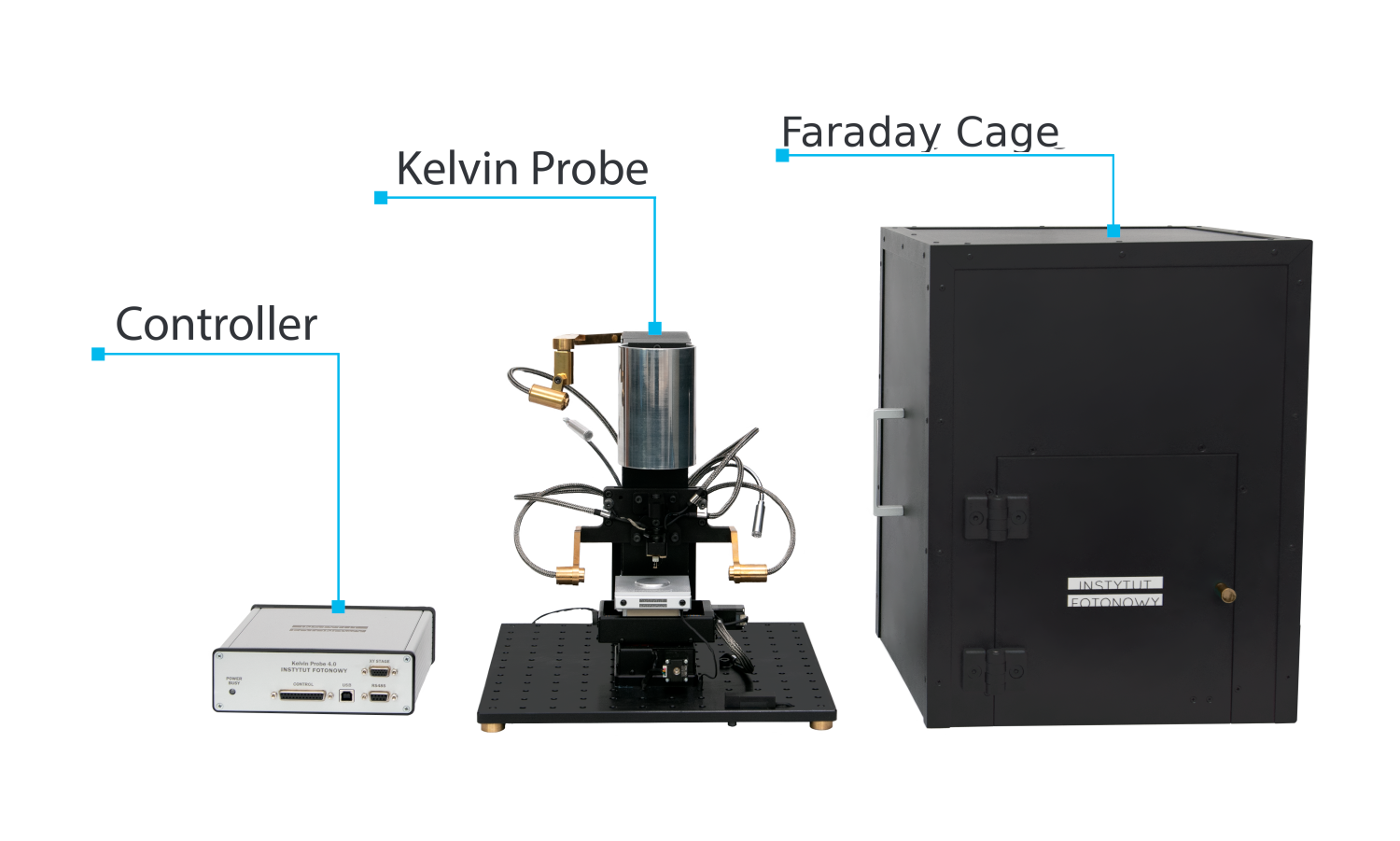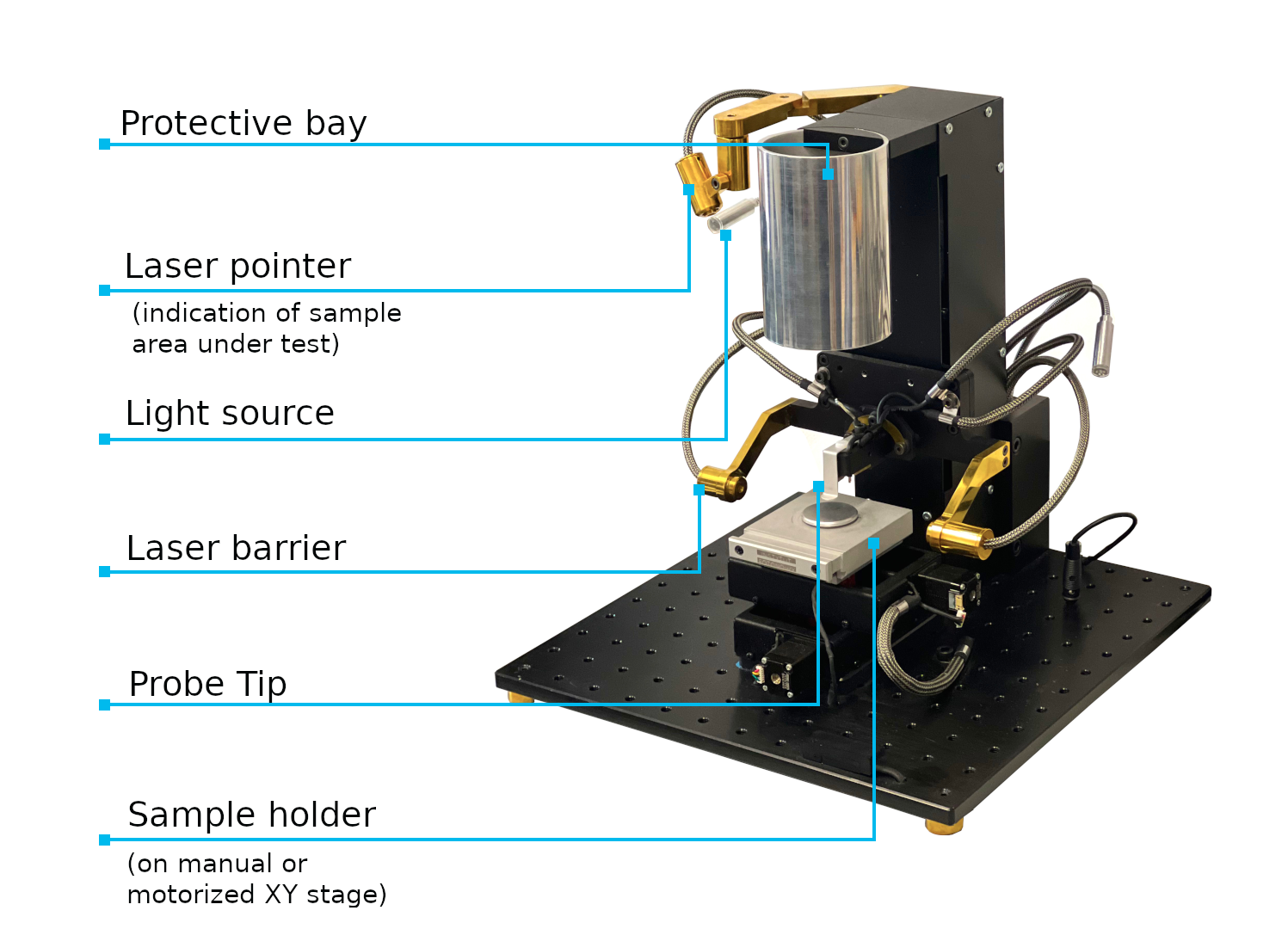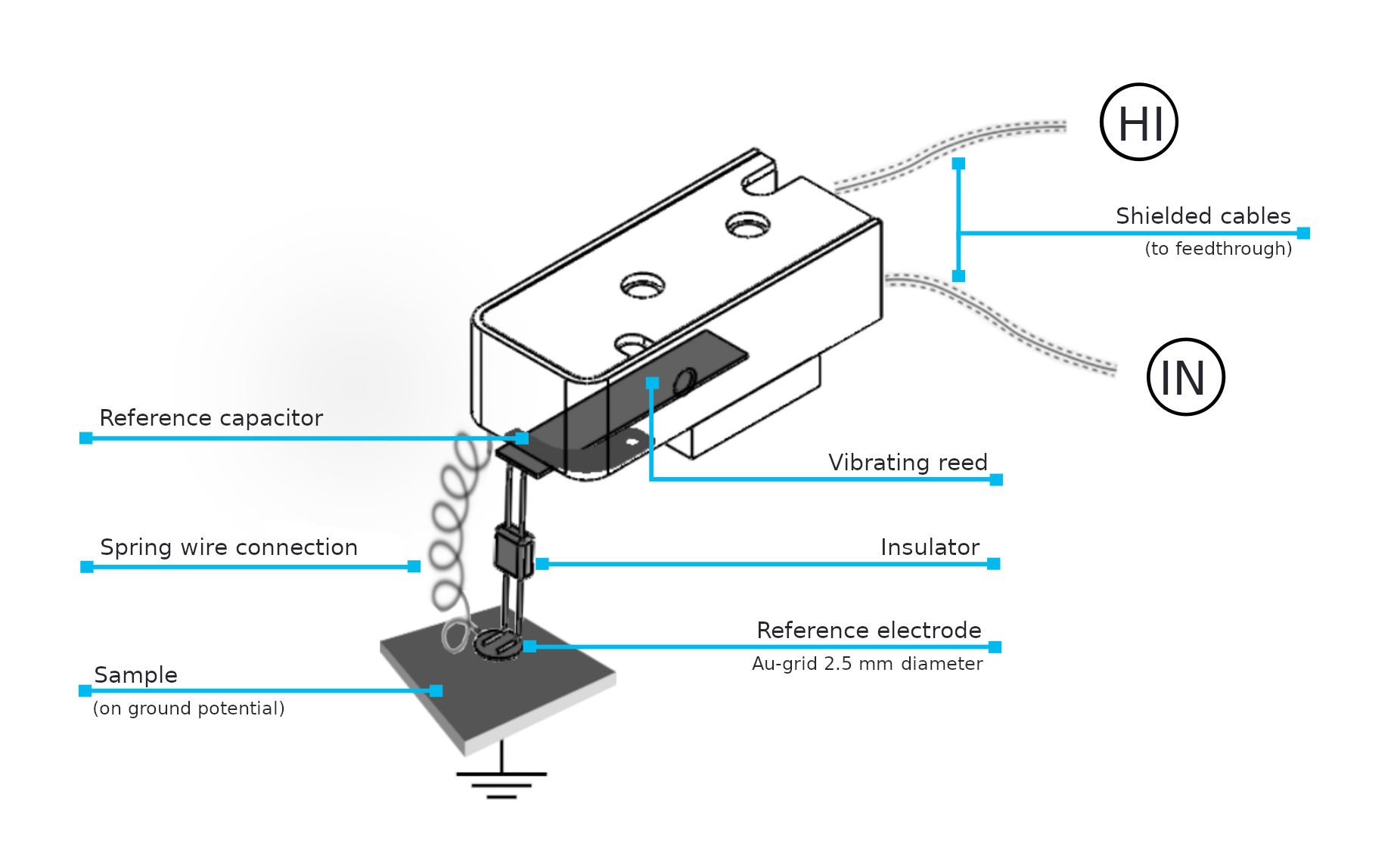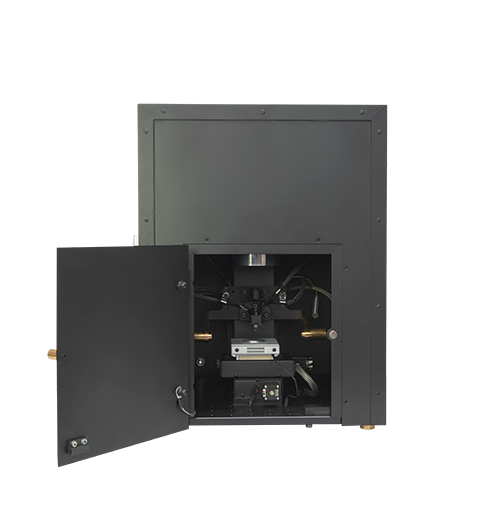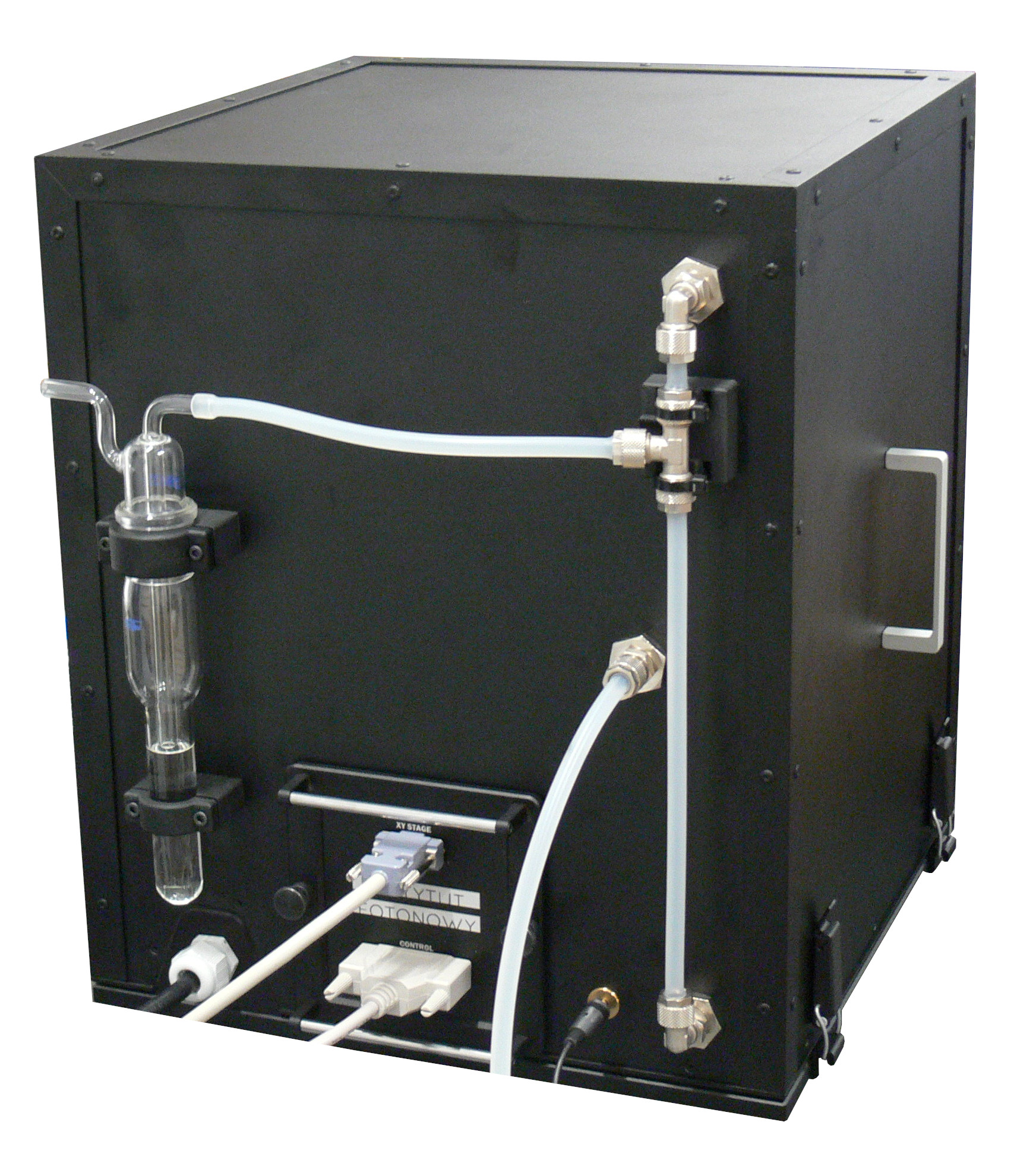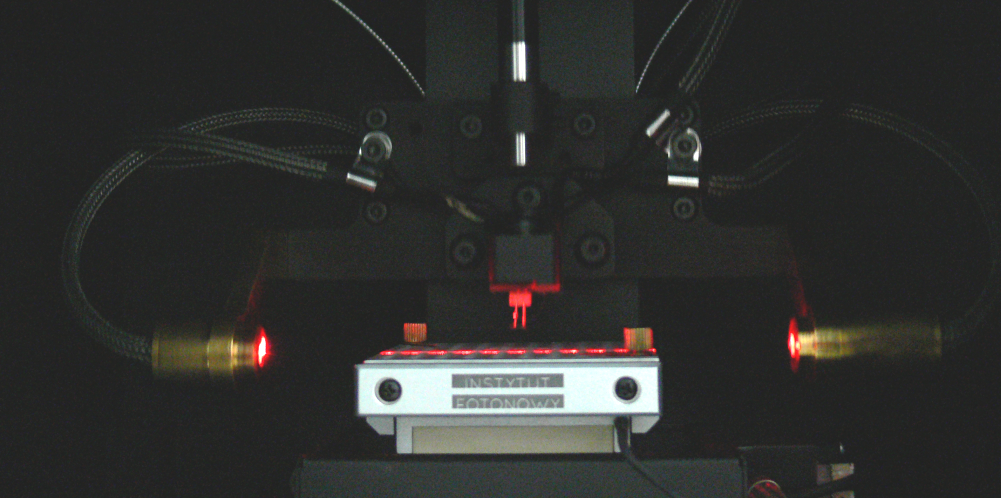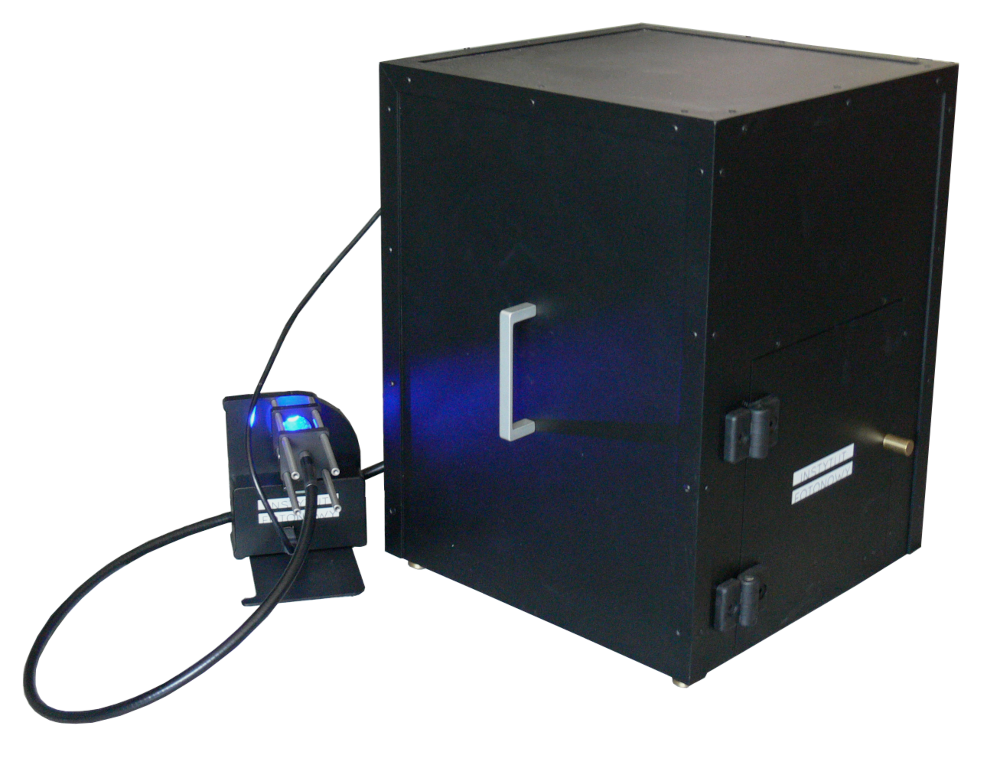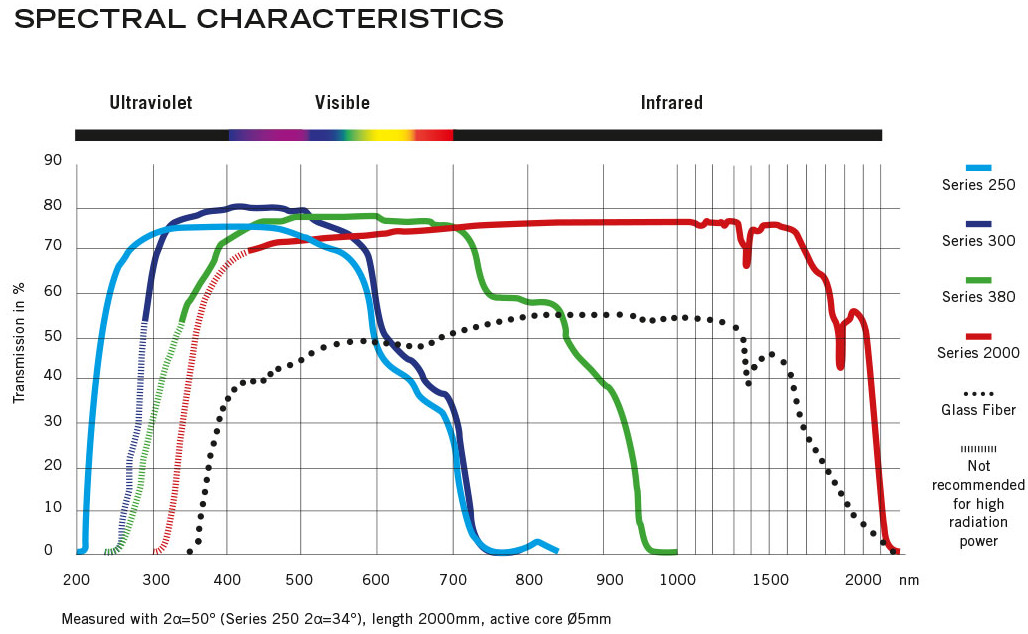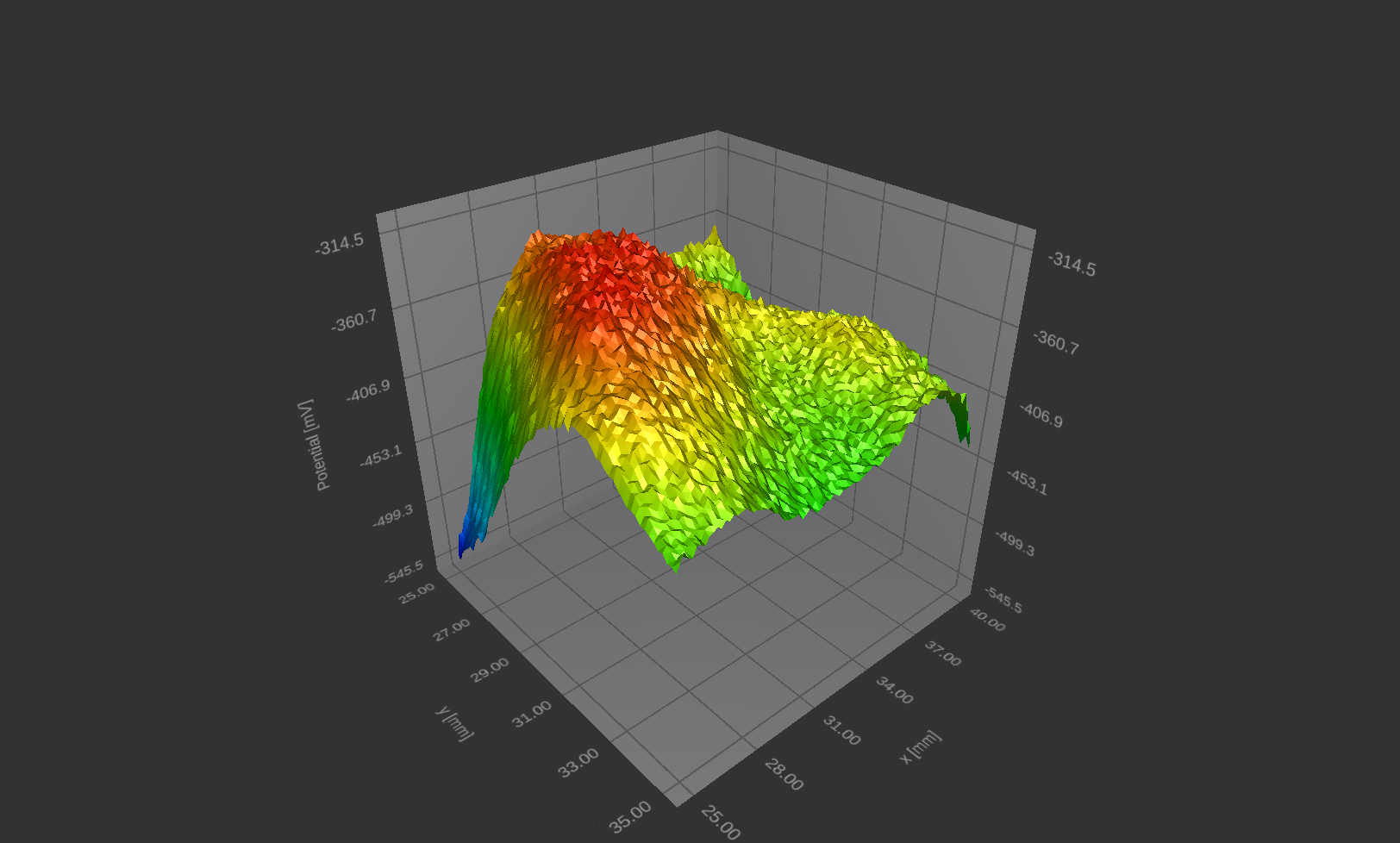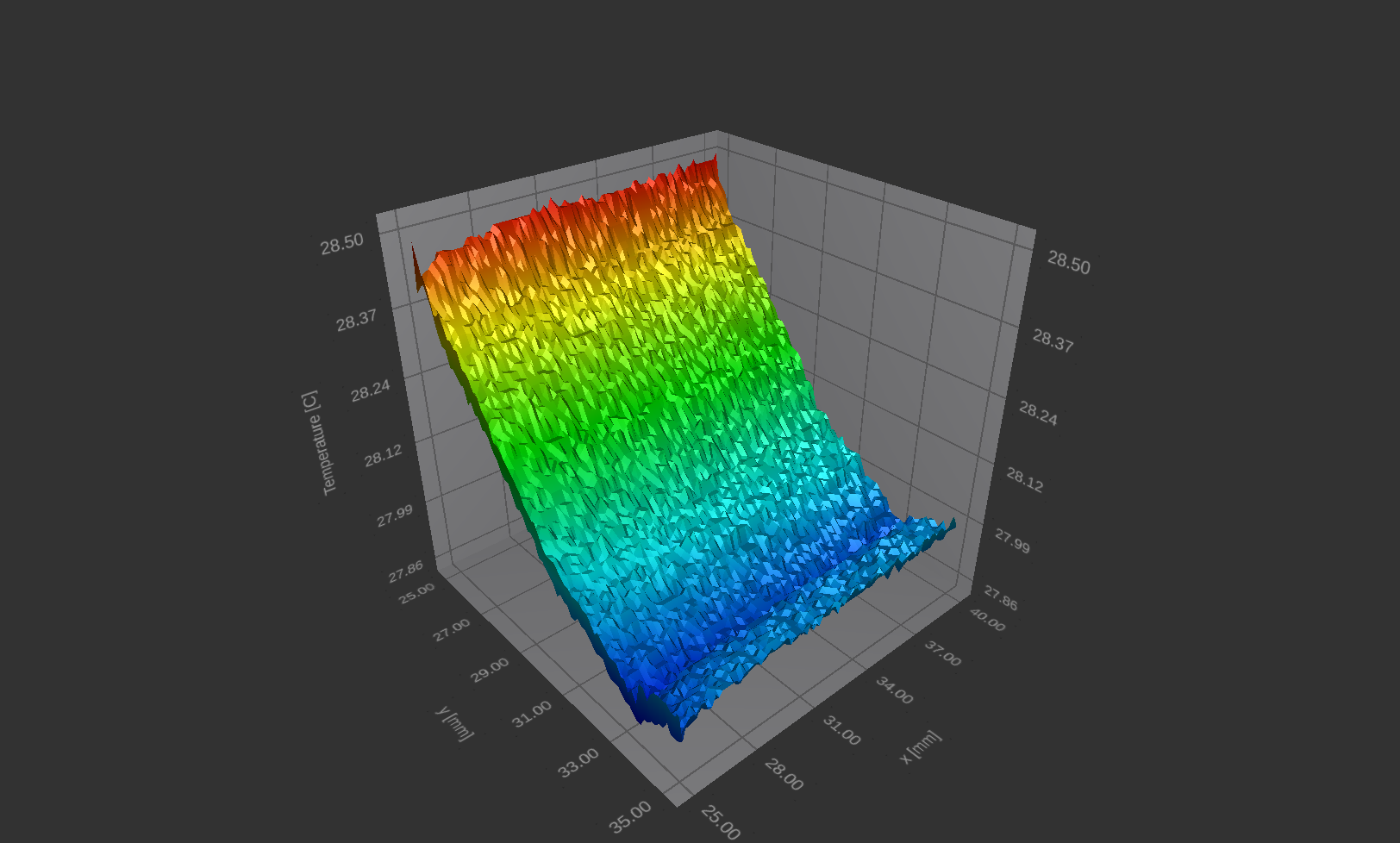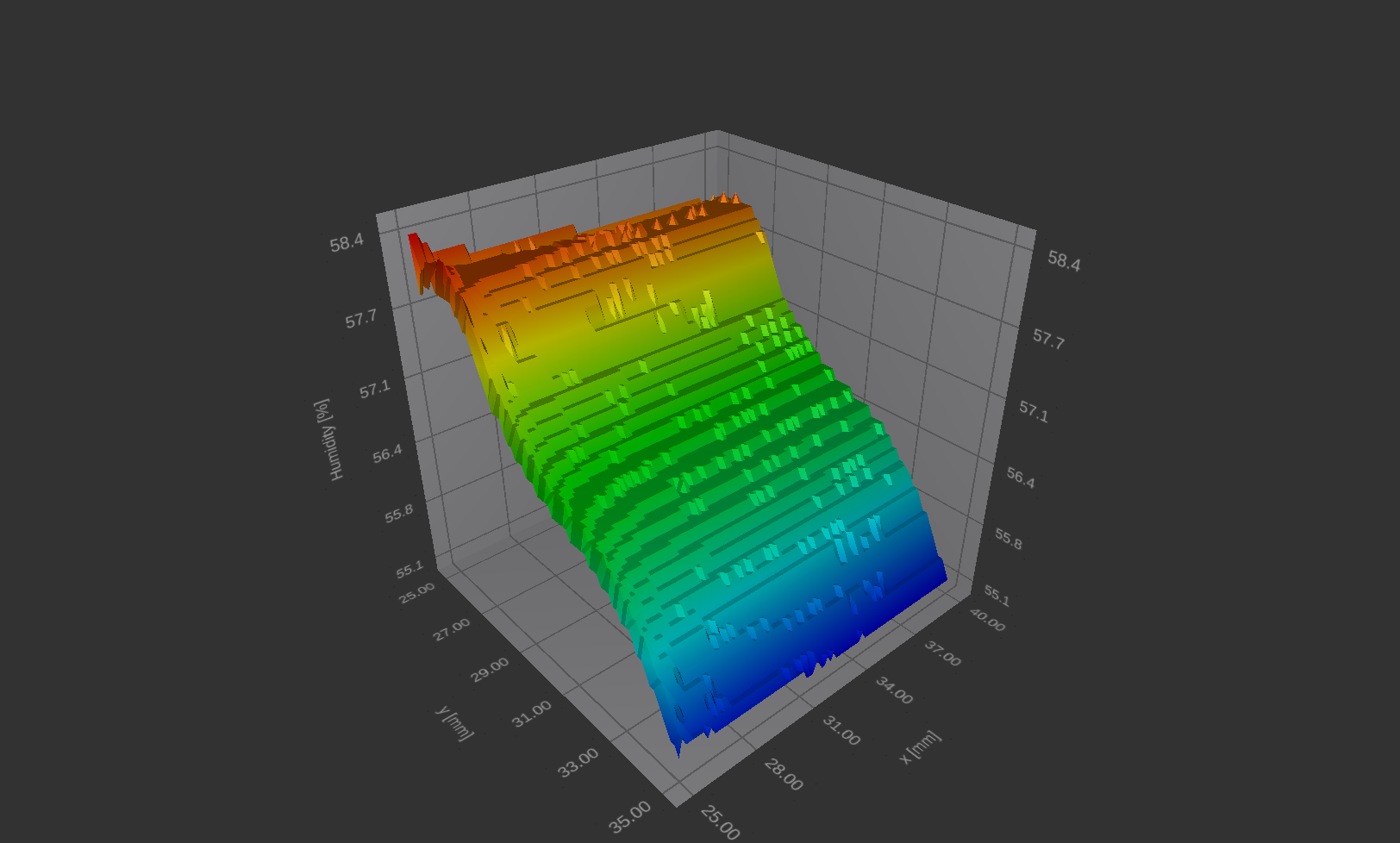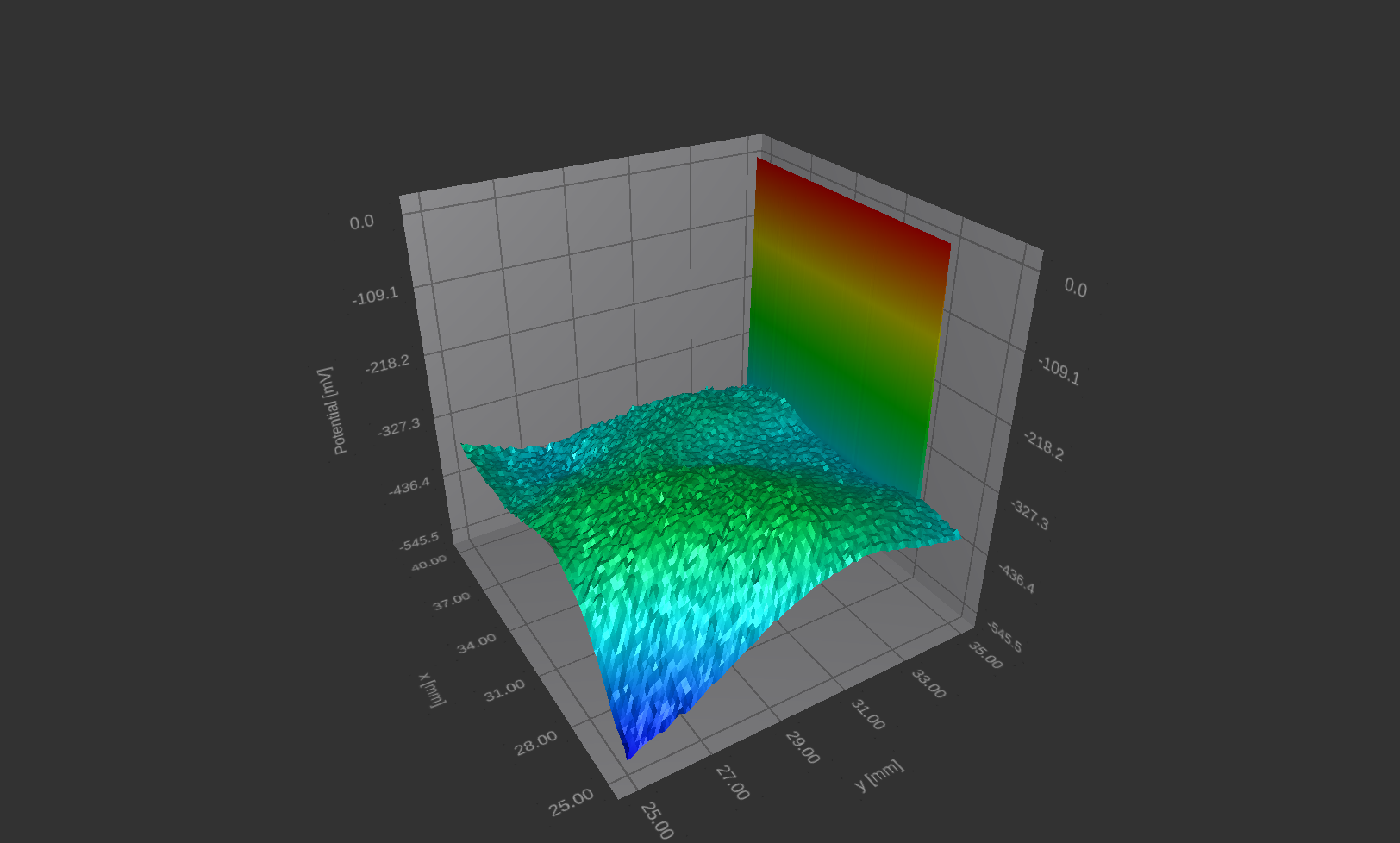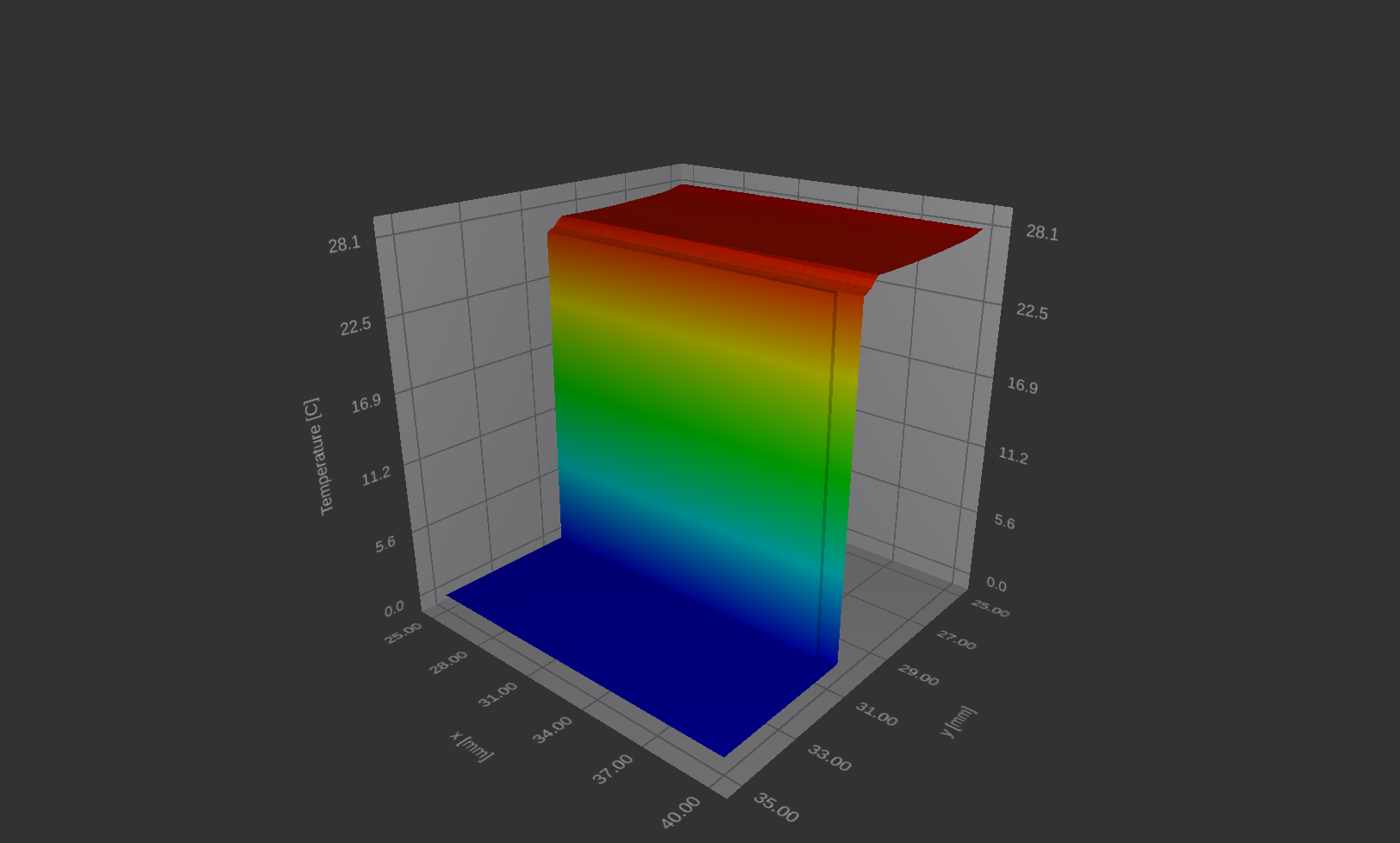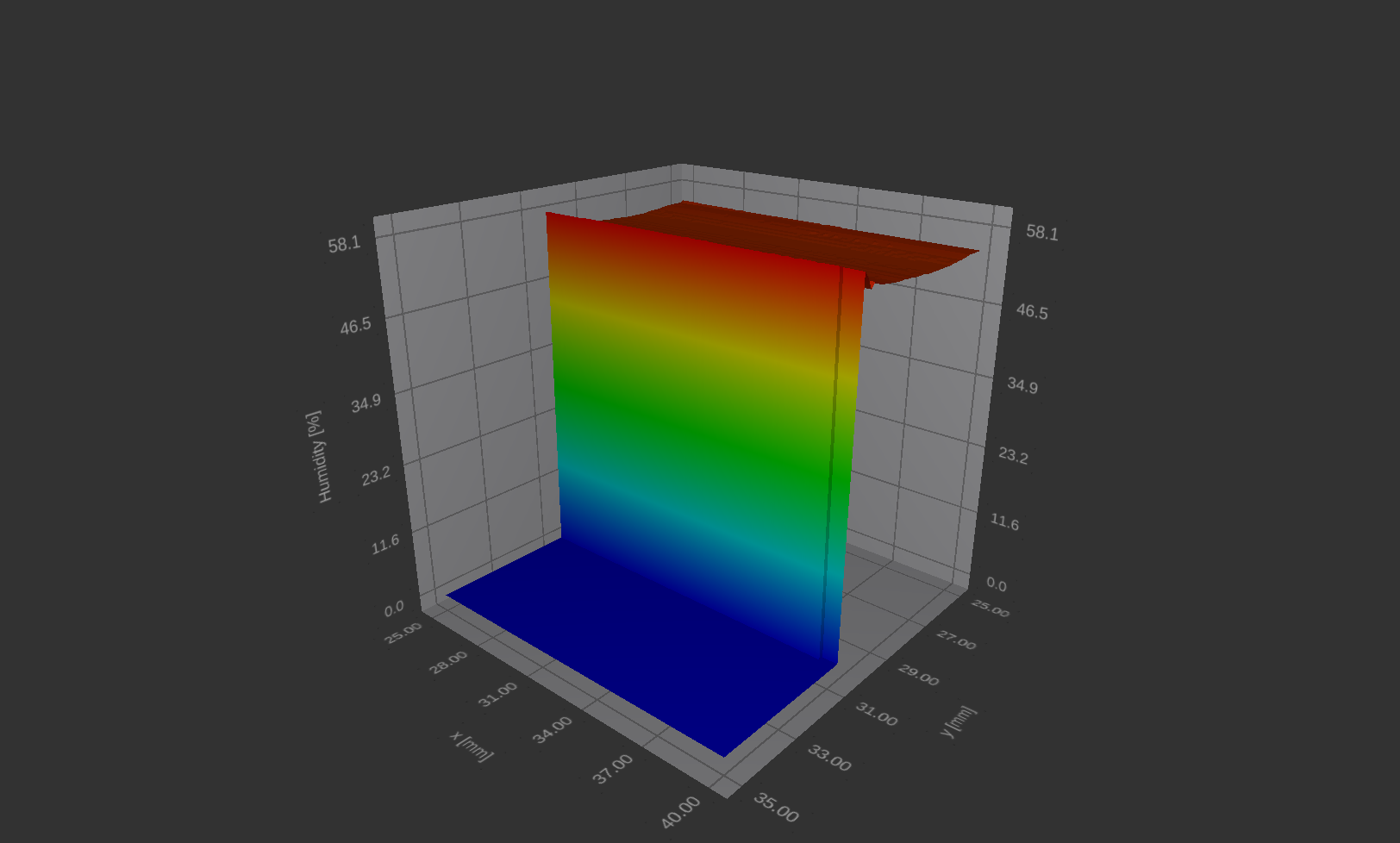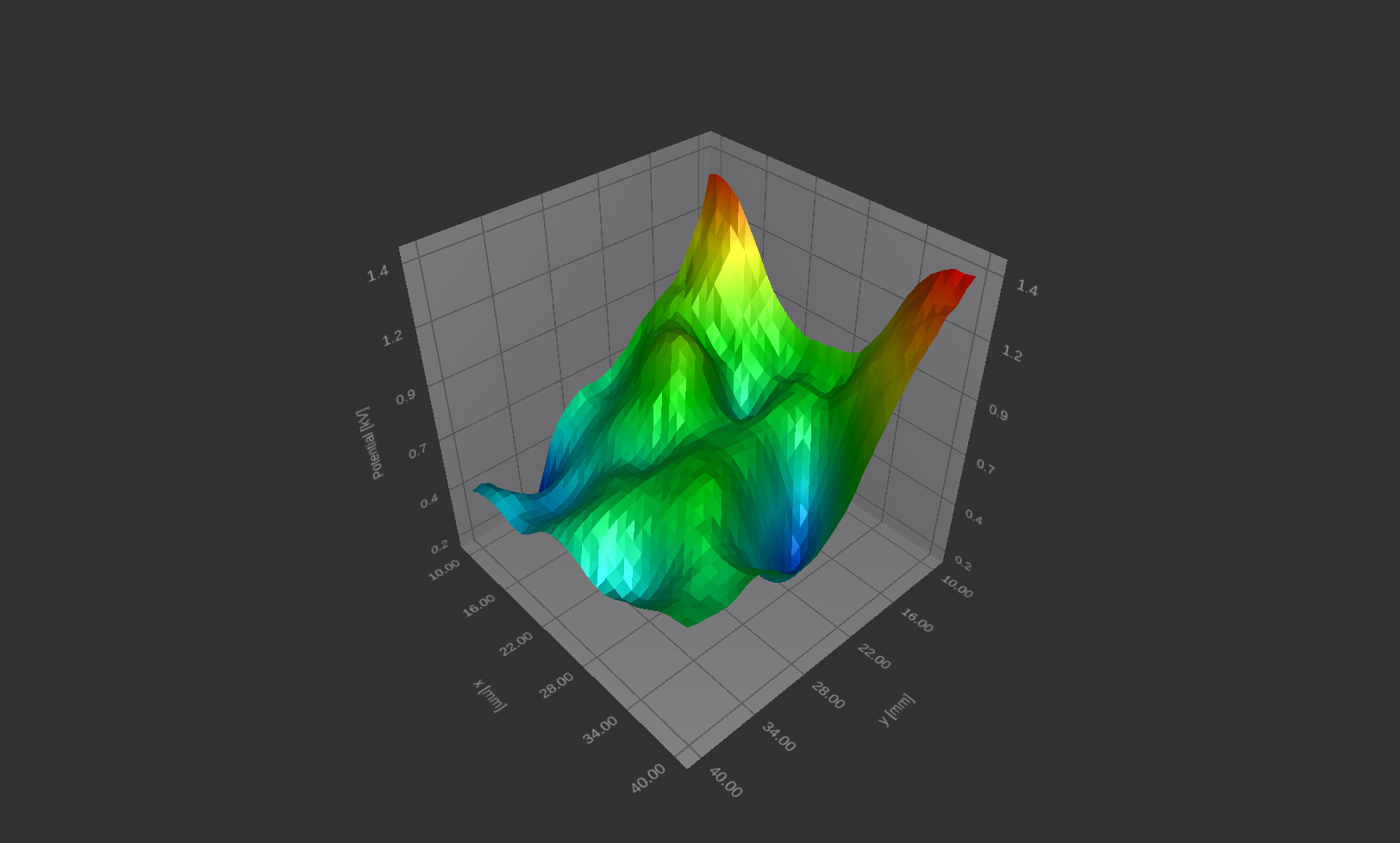The Complete Kelvin Probe is an invention by Instytut Fotonowy that addresses a 150-year-old limitation of traditional Kelvin Probes: when a change in Contact Potential Difference (CPD) is observed, it’s unclear whether the change originates from the sample’s Work Function (WF) or from the WF of the probe tip.
The Complete Kelvin Probe is the ultimate CPD measurement device. It performs all the functions of conventional Kelvin Probes but adds the unique capability to measure:
- The CPD of a sample with respect to the ground
- The CPD of the tip with respect to the ground
This feature allows users to clearly distinguish the contributions to the sample-tip CPD from both the sample and the tip.
Sample-Tip CPD
Sample-Tip Contact Potential Difference (blue) with recorded ambient air temperature (green) and relative humidity (orange):
click the picture to enlargeSample-ground CPD
Sample-ground Contact Potential Difference (red) with recorded ambient air temperature (green) and relative humidity (orange). It represents only small fraction of the sample-tip variation:
click the picture to enlargeTip-ground CPD
Tip-ground Contact Potential Difference (gold) with recorded ambient air temperature (green) and relative humidity (orange). It shows that most of the CPD change is due to the change on the tips surface:
click the picture to enlarge
The Kelvin Probe set consists of:
- Controller unit,
- Kelvin Probe instrument with the Probe Tip,
- Faraday Cage.
The Kelvin Probe instrument is equipped with:
- Protective bay to park the Probe Tip after experiment,
- Laser pointer to indicate the area directly,
- Light source that helps to handle the sample when the instrument is covered with the Faraday Cage,
- Laser barrier to precisely detect the Probe Tip distance to the sample,
- Golden Probe Tip,
- Sample holder,
- Motorized XY Table.
Probe Tip
The most important part of the Kelvin Probe instrument is the Probe Tip. The reference electrode is made of Au mesh of 2.5 mm in diameter. It provides high signal to noise ratio, even from a distance of 0.5 mm above the sample. Thus, it does not matter if the examined sample surface is rough or polished. The tip oscillations are generated with an electromagnet.
The Probe Tip is the component fully designed and manufactured by Instytut Fotonowy Sp. z o.o.
click the picture to enlarge
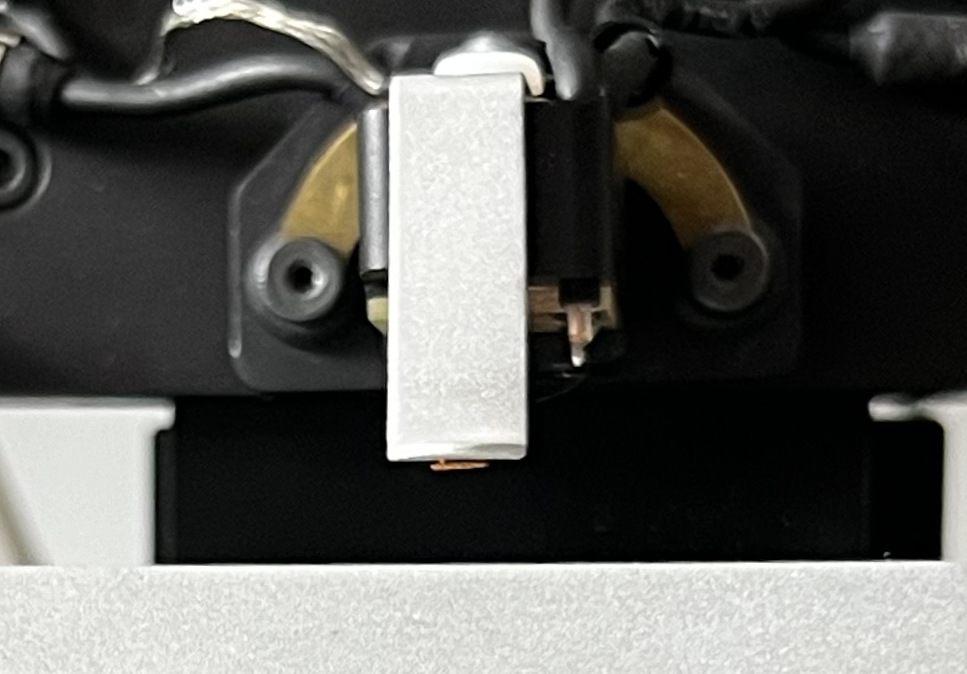
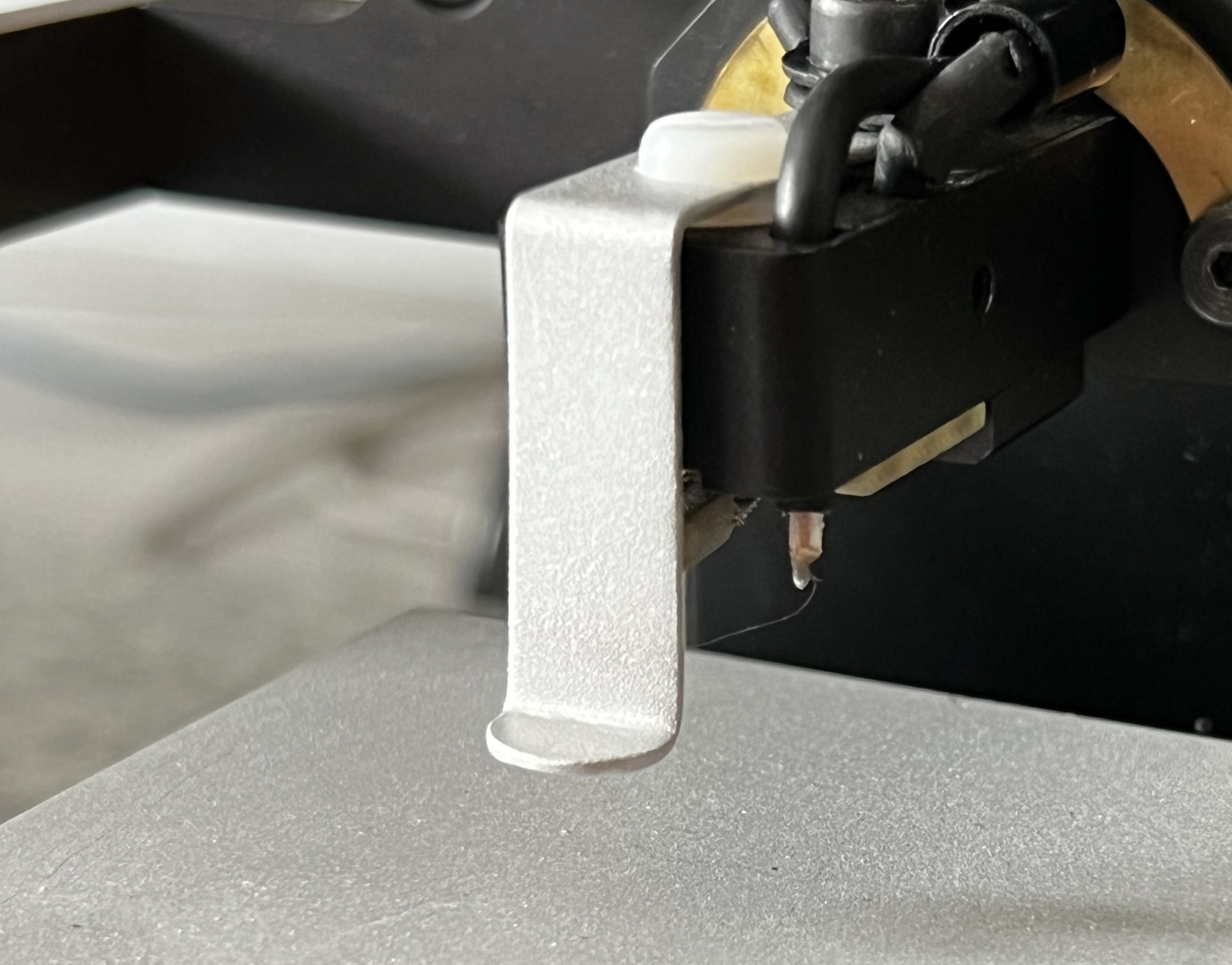
Sample holders
The standard Kelvin Probe Set includes two types of sample stands:
- Bottom contact stand for samples on conducting substrates,
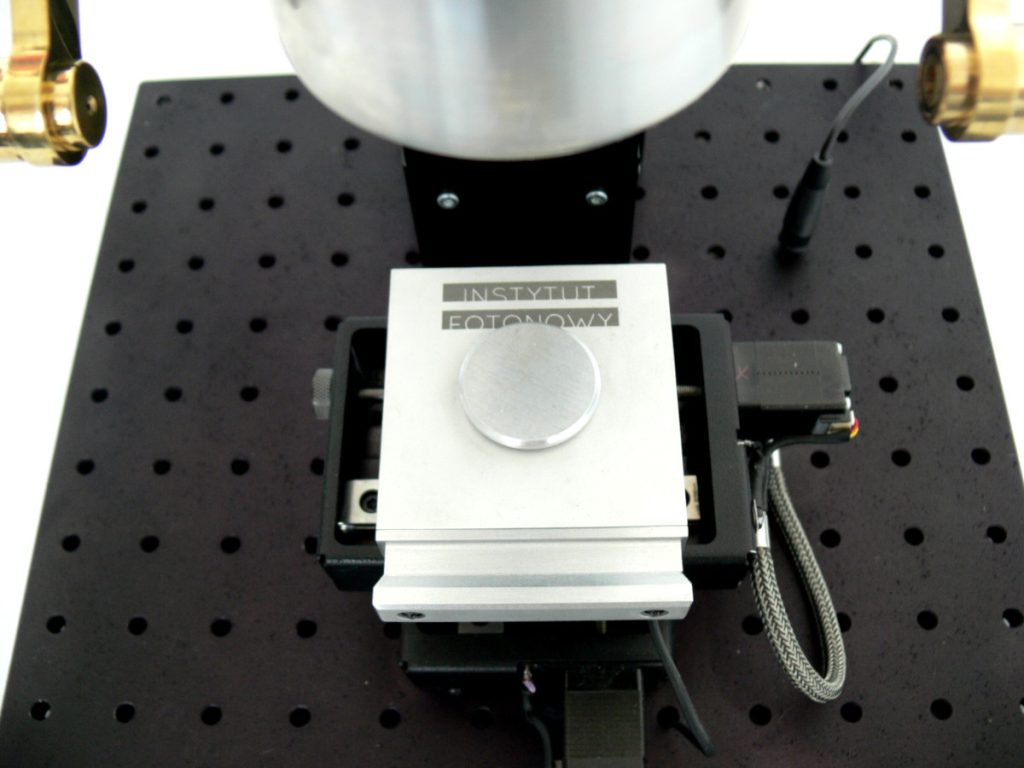
- Top contact stand for non-conducting substrates,
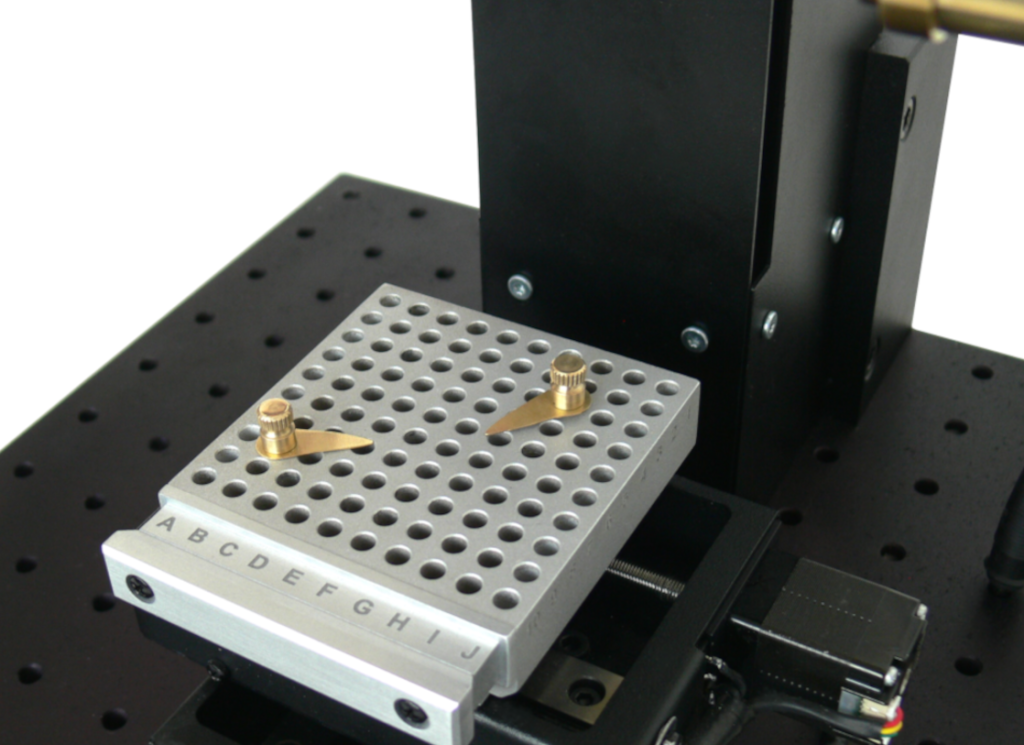
Faraday Cage
The entire instrument is covered with the Faraday Cage, shielding the setup from the ambient light and electromagentic fields.
click the picture to enlarge
Gas-tight Faraday Cage with inert gas flow system
Scince measurements of the CPD is often sensitive to environmental factors such as temperature, humidity, dust and chemical contaminants, Kelvin Probe may be placed inside the hermetic version of the Faraday Cage with the inert gas flow system.
click the picture to enlarge
Laser barrier
The Kelvin Probe is equipped with the Laser barrier system. The system automatically detects the sample substrate. Each time the probe approaches the sample being examined, an accurate distance between the sample surface and the Probe Tip is measured with 20 µm precision.
click the picture to enlarge
Sample illumination
The sample may be illuminated during the measurements from the optical fiber situated above the Probe Tip. The Probe Tip lets the light through. The light at optical fiber input may be provided by the LED Revolver, Xenon Lamp combined with the Monochromator or any other type of the light source desired.
click the picture to enlarge
Several types of liquid lightguides from Lumatec may be used to provide the sample illumination.
General:
- Weight: 15 kg,
- Size: 40x40x45 cm,
- PC connectivity: USB 2.0,
- Power supply: 230 V, 50 Hz or 115 V, 60 Hz,
- Measurement technique: 2-channel lock-in-amplifier,
- Laser barrier to automatically detect the substrate and prevent the tip from running into the sample,
- Auxiliary sensors: humidity, temperature,
- Small lamp,
- Laser pointer for examined point of the surface indication,
- Sample holders:
– Freely shaped solid state with top contact holder,
– Bottom contact holder,
– Electrochemical holder,
Faraday Cage:
- Standard / gas-tight with inert gas flow system,
Measurement unit:
- Bias voltage range: -5 ÷ 5 V,
- Voltage measurement resolution: 0.15 mV,
- Current ranges: 300 nA, 30 nA, 3 nA, 300 pA,
Probe Tip:
- Probe Tip type: Au mesh, 2.5 mm in diameter,
- Tip positioning resolution in vertical axis: 20 µm,
- Automated resonance frequency scanning,
- Adjustable oscillation amplitude,
- Automated removal of the parasitic current of the tip,
- Partial transparency for the light,
- Typical CPD measurement distance: 0.2 – 1 mm,
XY Table:
- Motorized, controlled via software,
- Size: 50 x 50 mm,
- Movement range: 50 x 50 mm,
Aluminium surface
Metal surface sample with periodic holes
Preview during ongoing measurement
Charge distribution on the dielectric surface
PTFE on alluminium foil – Electric potential from the surface charge of the sample
click the picture to enlarge



